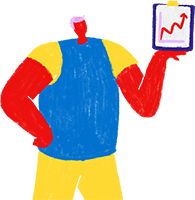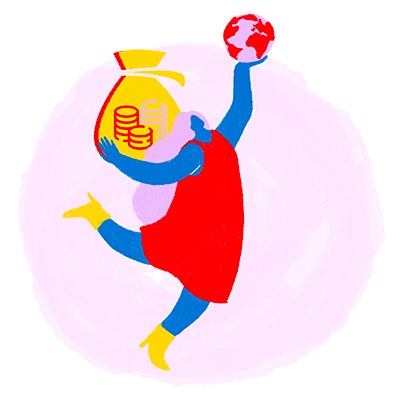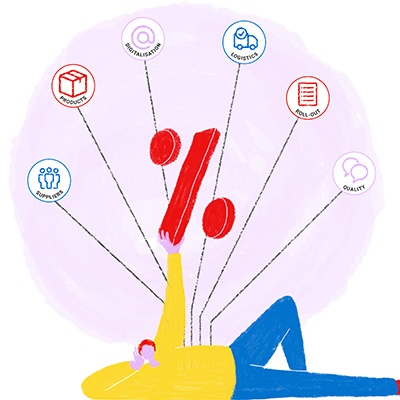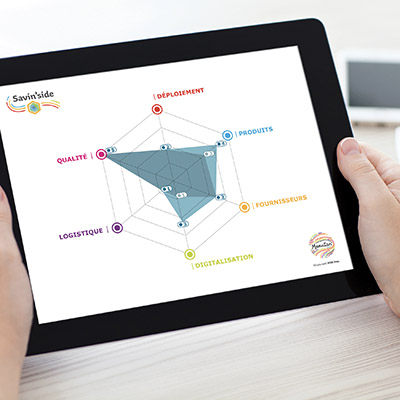The circular economy refers to a sustainable mode of production and consumption that seeks to reduce wastage of resources and the production of waste. This simple definition of the circular economy stands in contrast to the linear economy, which is the current economic system, based on a throwaway mentality. To fully embrace this model, which reconciles economic and ecological challenges, it is essential to understand all its components. Here are the major pillars that make up the circular economy, also known as the 7 pillars of circular economy.
1. Sustainable supply
Firstly, the circular economy applies to the source, from the extraction and exploitation of resources. Sustainable supply aims for efficient and responsible resource use, limiting waste and environmental impacts.
This is particularly crucial for agricultural, forestry, and mining operations, which have a detrimental impact on the planet (reduction in biodiversity, pollution, soil degradation, etc.) and the health and wellbeing of humans (violence, territorial conflicts, etc.). For example, companies should restore sites after exploitation, manage renewable resources by taking into account their renewal capacity, etc.
2. Eco-design
The circular economy then involves considering environmental impacts at each stage of the life cycle of products, services, or even processes, starting from the early stages of design.
This concept of eco-design is expressed through several criteria:
- Durability;
- Repairability;
- Energy efficiency;
- Recycled materials content;
- Rejecting planned obsolescence;
- Consumer information;
- Etc.
The idea is to strike a balance between environmental and social considerations while preserving economic and technical aspects.
3. Industrial and territorial ecology
The circular economy advocates resource optimisation in territories. That’s why this third lever focuses on industrial and territorial ecology, also known as “industrial symbiosis”. This involves exchanging flows and/or pooling needs with other neighbouring economic players. Although natural resources (energy, water, raw materials, etc.) naturally come to mind, this also includes waste management, equipment, and even know-how. This approach is inspired by natural ecosystems, whose functioning tends to preserve the integrity, behaviour, and structure of a larger system.
Kalundborg, a Danish port city, is one of the best examples of industrial ecology. Here, large industrial groups (refineries, biochemistry, plaster, etc.) have successfully optimised available resources to turn one’s waste into resources for others. For instance, the steam produced by the power station benefits the oil refinery, which in turn sends its wastewater to be used for cooling. Once tepid, such waters serve a fish farm. All flows are interconnected for perfect industrial symbiosis.
4. The functionality economy
This pillar of the circular economy focuses on prioritising use over ownership. More specifically, the functionality economy, also known as the economy of use, involves selling (or buying) services rather than products with the aim of extending the lifespan of equipment.
The perfect example of a company embodying this lever of the circular economy is Michelin. For several years now, the global leader in tyres has been offering a tyre rental and maintenance service, with a rate per kilometre travelled. It is a win-win approach: Customers save money while the manufacturer doubles the lifespan of its tyres.
5. Responsible consumption
The circular economy also implies a different way of consuming. The buyer or consumer must also take into consideration the environmental and social impacts of the products and/or services they wish to acquire at each stage of their life cycle.
In practice, they should favour:
- Products made from recycled materials;
- Second-hand items;
- Repairable or refillable products;
- Concentrated formulas;
- Materials sourced from sustainably managed forests;
- Etc.
The possibilities are incredibly vast. As you may have understood, the key to this pillar of the circular economy lies in the communication of information and the sharing of proven evidence of sustainable development efforts (ecolabels, labels, regulatory labelling, third-party testing, etc.).
6. Extending the duration of use
The circular economy also requires the consumer to extend the lifespan of the products they buy as much as possible. There are several options: Reuse, repair, and repurposing.
Reuse
The idea is to reuse substances, materials, or products (which have not yet become waste) for the same purpose they were originally designed for. These are second-hand items or refurbished products.
Repair
This simply aims to restore a broken or faulty item to working order for its intended original purpose and use.
Repurposing
The principle is to use substances, materials, or products again, which have, in the meantime, become waste.
7. Recycling
One of the key principles of the circular economy is to effectively manage waste. Companies must focus on waste prevention and reuse, followed by recycling. According to the European Union, recycling refers to "any recovery operation by which waste materials are reprocessed into products, materials or substances whether for their original purpose or for other purposes. It includes the reprocessing of organic materials but does not include energy recovery and reprocessing into materials that are to be used as fuels or for backfilling operations.”
One of the major challenges of recycling lies in efficient waste sorting. Only then will it be possible to massify the different types of waste and thus, create effective recycling sectors.
From sustainable sourcing to waste recycling, it is the responsibly of companies to start integrating the seven pillars of circular economy into the core of their business models and prepare for the ecological transition.
By transitioning from linear to circular economies, the end goal is to better reconcile ecological considerations with economic well-being, ensuring a more sustainable future for all.








